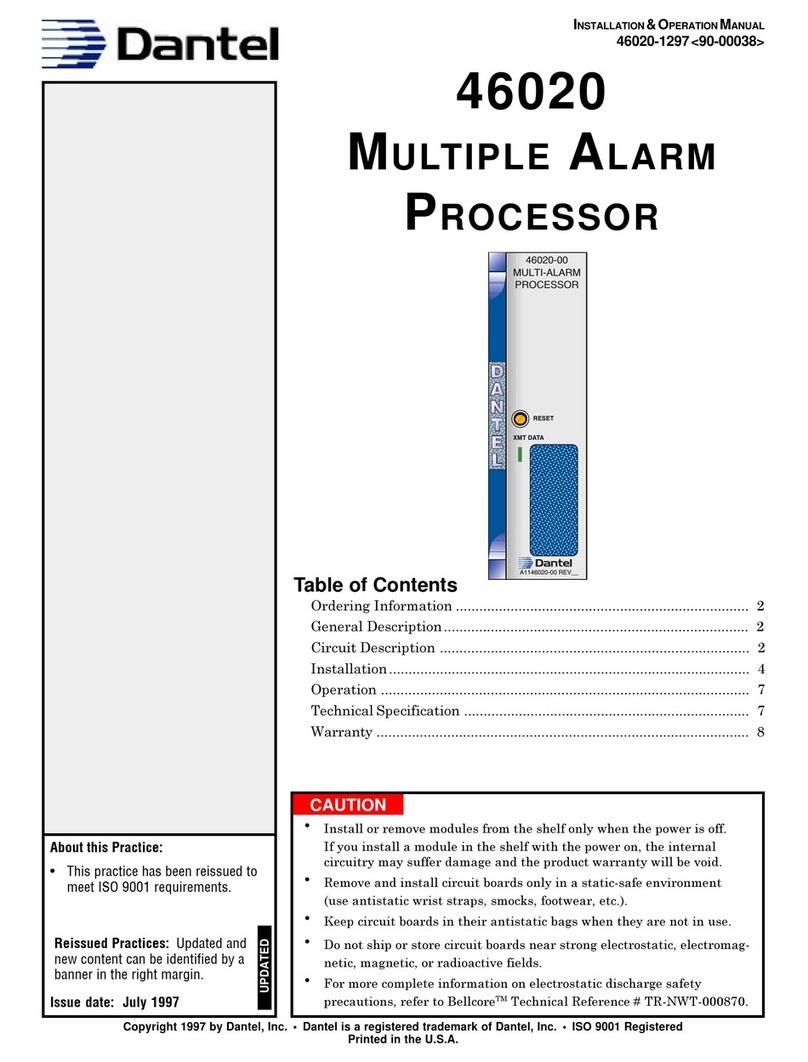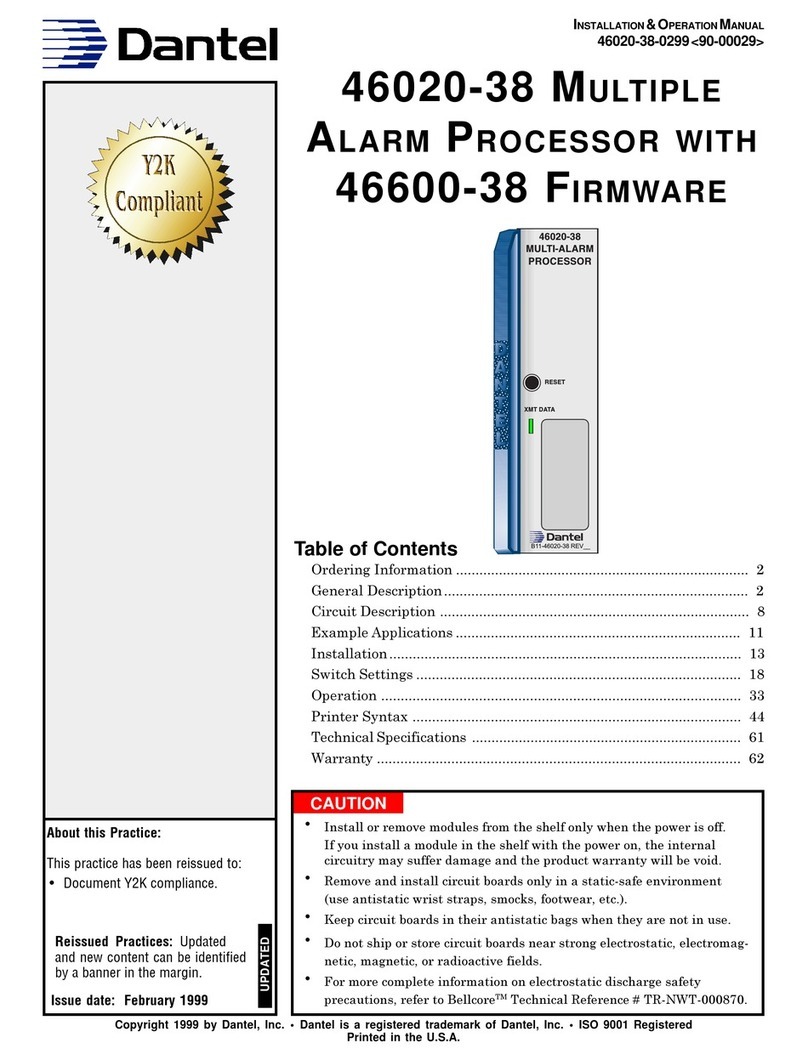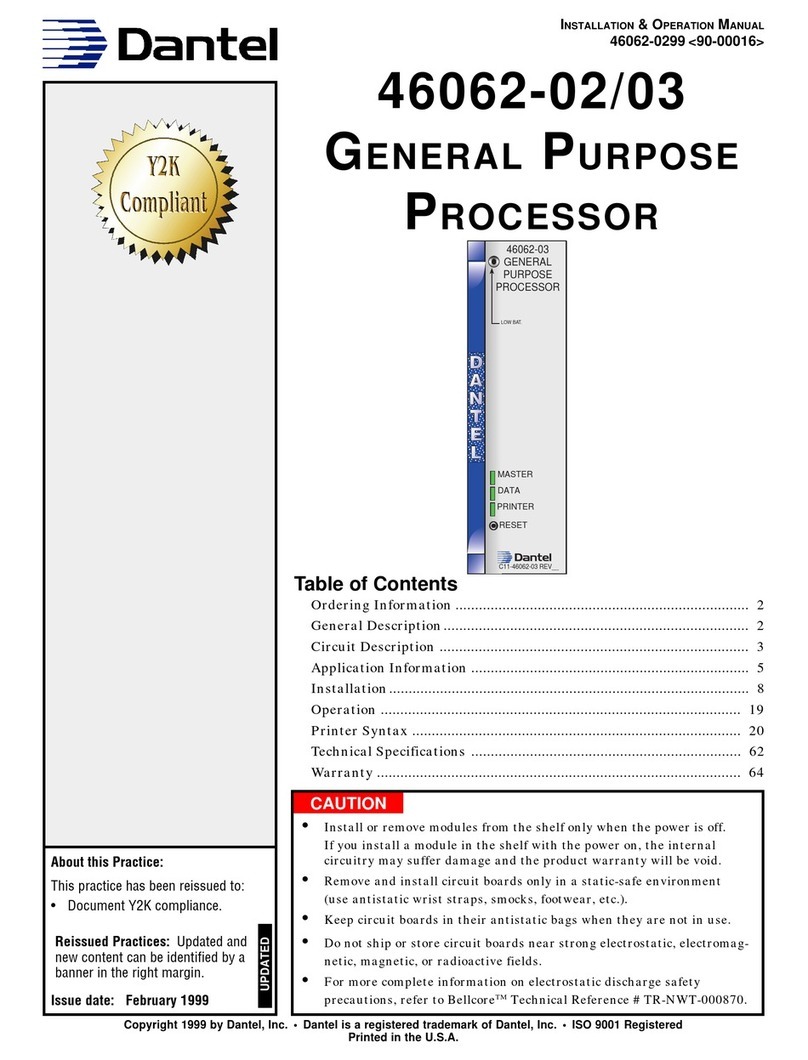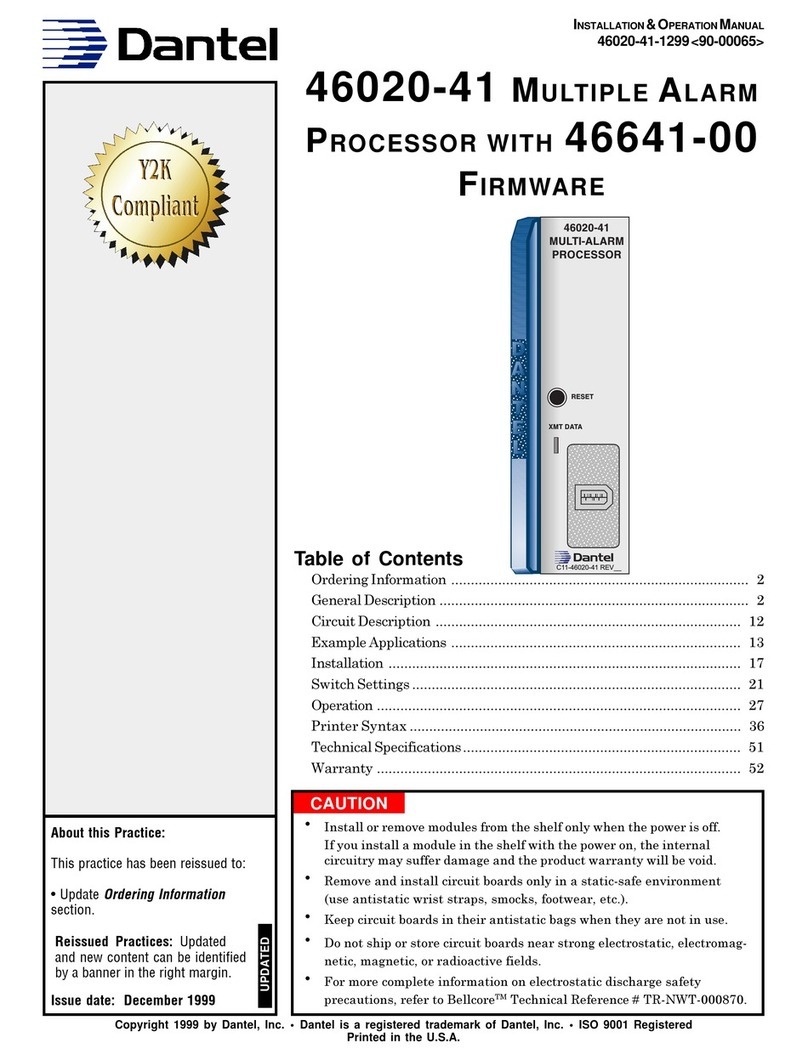
46020-40-0399<90-00039> PAGE 3
Printer Port
♦Connects to a standard ASCII (VT-100) terminal, with or
without a serial printer,
or ♦Connects to Dantel’s 46001 Status Monitor.
You can use the terminal or status monitor for local alarm
reporting. The terminal also can operate controls.
♦May also operate as a master port (when configured for
TABS, TBOS, DCP, or DCPF protocol).
♦Works with PC software to configure MAP memory.
Data Port
♦Can interrogate up to 4,096 remote alarm points (64 displays)
and
♦Can operate up to 4,096 control points (64 displays). These
may be discrete alarm points connected to 46009 or 46010
Multiple Alarm Transmitters (MATs) and control points
wired to 46028 or 46029 Control Point Modules (CPMs).
Can also communicate with alarm and control points through
TBOS serial equipment.
Uses TABS protocol to communicate with network elements
and AT&T remotes that use TABS for alarm reporting.
♦Can connect to another MAP (using TBOS, DCP, or DCPF
protocol) that communicates with the alarm and control
points.
♦Is called the MAP port when it is connected to a 46023-12
Smart MAC and communicates with DCP or DCPF devices.
TYPICAL SYSTEMS
The following diagrams show examples of how the 46020 MAP is
used in typical systems. Fig. 1 shows a basic system and Fig. 2
shows a system with an intermediate MAP.
GENERAL DESCRIPTION
NOTE:
In order to work, the MAP must
be configured. Configuration de-
fines how the MAP will function,
such as what alarms it will poll
and what control points it will
operate. The Printer Syntax in
this manual cannot be used for
configuring the system.
To configure, use T/Shell soft-
ware with the MAP 40 Editor
Module and an IBM-compatible
computer. Refer to the software
manual for complete instruc-
tions.
NOTE:
The 46020-40 MAP’s Data Port is
usually factory-wired to one or
more 46023-12 Smart Multiple
Alarm Combiners (SMACs). The
SMAC serves to expand the
MAP’s single TTL Data Port out
to multiple RS-422 Data Ports. In
this situation, the MAP’s port
which communicates with the
SMAC is referred to as the “MAP
Port” - the “Data Port” having
been relocated to the outputs of
the SMAC. Refer to Figs. 2 & 3.































